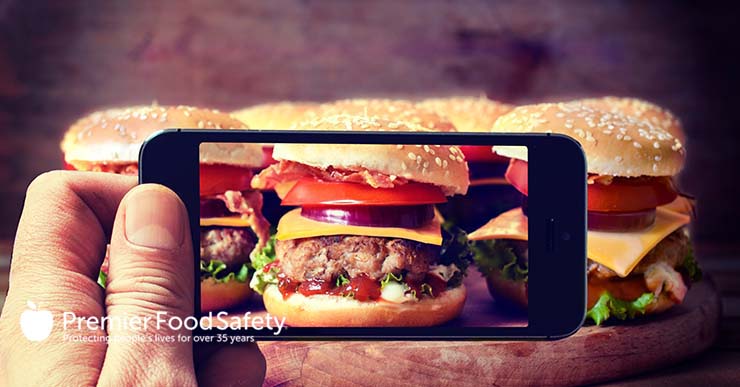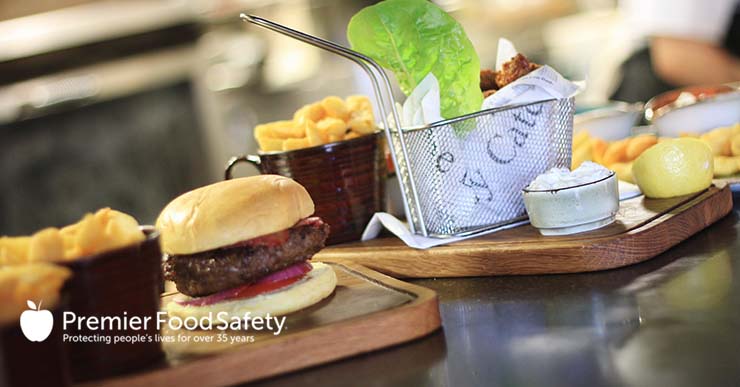Monthly Archives: November 2015
Published November 26, 2015
10 Top Food Trends for 2015
2015’s trendiest foods run the gamut from traditional American comfort food like fried chicken and breakfast to exotic imports like fish poke. The appetites of U.S. consumers are trending more and more towards big flavors and foods with a strong cultural background and rich history.
Read More: https://premierfoodsafety.com/blog/10-top-food-trends-for-2015/
Published
Food Trucks: Coming to a Mall Near You
Although Americans’ changing shopping habits have made many restaurant chains leery of investing in food court locations. Nick Crosson of the Raleigh-Durham based food truck Porchetta is more optimistic about the future of food court dining. Crosson recently signed a 10 year lease at a Raleigh mall to give his roast pork concept its first […]
Read More: https://premierfoodsafety.com/blog/food-trucks-coming-to-a-mall-near-you/
Published
5 Kitchen Essentials from Alex Guarnaschelli
Alex Guarnaschelli is a familiar face to anyone who has watched the Food Network in the last few years. The Iron Chef and Chopped judge spoke to Restaurant Hospitality about the 5 things she needs to have in her kitchen at all times. Chef Alex loves the temperature control of her immersion circulator, and can’t […]
Read More: https://premierfoodsafety.com/blog/5-kitchen-essentials-from-alex-guarnaschelli/
Published November 25, 2015
Butter is Back
Butter consumption is on the rise in the U.S. thanks to a reconsideration of its reputation as an unhealthy food. Butter’s current popularity has led restaurant chains in the U.S. to add new butter-based dishes to their menu like Jack in the Box’s Classic Buttery Jack Burger.
Read More: https://premierfoodsafety.com/blog/butter-is-back/
Published
Is Expanding Your Restaurant a Good Idea?
All restaurant owners want their business to be profitable and successful, but some want more than that. Ambitious operators dream of turning their restaurants into multi-location empires with many employees and high brand recognition. Fast Casual has a list that breaks down the advantages and disadvantages of expanding your restaurant business beyond just one location. […]
Read More: https://premierfoodsafety.com/blog/is-expanding-your-restaurant-a-good-idea/
Published
10 Crazy Drink Orders Real Bartenders Have Heard
Every bartender has had to deal with customers ordering a crazy drink or two, but this roundup from Shiftgig might take the cake! How does a pitcher half filled with beer and half with gin sound to you? What about a mixture of beer, cola, and Frangelico? If a customer ordered called a bionic beaver, […]
Read More: https://premierfoodsafety.com/blog/10-crazy-drink-orders-real-bartenders-have-heard/
Published November 24, 2015
Were In-Restaurant Tablets a Bad Idea?
In the wake of the release of the first iPad, enthusiasm about the potential of tablet technology was high. Many restaurants incorporated table-side tablets into their ordering and payment procedures. Now, with the advent of mobile payment apps, restaurant tablets may be on their way out.
Read More: https://premierfoodsafety.com/blog/were-in-restaurant-tablets-a-bad-idea/
Published
Taco Bell Moves Original Location 45 Miles
Taco Bell’s original location, a one-story hole in the wall with a walk-up window opened by Glen Bell in 1962, is going on a journey soon. The building, which the company has dubbed “Numero Uno,” was scheduled to be demolished by the city of Downey, California. Even though Numero Uno hasn’t operated as a Taco […]
Read More: https://premierfoodsafety.com/blog/taco-bell-moves-original-location-45-miles/
Published
Decorate for Christmas the Right Way
How do you usually decorate your business for the holidays? Christmas trees, wreaths, and tinsel may seem like the obvious choices, but going the traditional route might not be the best option. Try going with a rustic feel by replacing floral table displays with arranged twigs, holly, and spruce branches. The holidays are all about […]
Read More: https://premierfoodsafety.com/blog/decorate-for-christmas-the-right-way/
Published November 23, 2015
5 Insights About Modern American Food Culture
A report from the Hartman Group analyzes the sweeping changes in U.S. food culture that have accompanies the American food renaissance. Consumers now want more variety, value cooking skill, eat meals at strange times, and care more about ingredient sourcing.
Read More: https://premierfoodsafety.com/blog/5-insights-about-modern-american-food-culture/
ARCHIVES
- Commentary
- Earn Loyalty from College Students with Gluten-Free Options
- A Look Inside the Fast-Food App War
- Healthy Eating Trend Equals Greater Risk for Foodborne Illness
- Why Your Managers Would Love to Stop Counting Money
- How to Ace a Grand Opening
- Food Handler
- How to Compliment Guests
- Tips for balancing your job and your relationship
- More annoying customers that drive you crazy
- The tip of a lifetime
- Customers are annoying
- Food Manager
- Online ordering – the future is now!
- Improve assistant manager skills to boost business
- How to Manage and Control Food Costs
- Sustainable food is good for business (and the environment!)
- What’s the Deal with Baby Boomers?
- News
- Jimmy John Liautaud to Receive Horatio Alger Award
- Loyalogy Announces New 2018 Rewards Program Research Study with Customized Options for Restaurant Companies
- Pita Pit’s CEO Talks Fresh Menu, Future Changes
- Leaders Establish Foodservice Consulting Firm
- CoreLife Eatery Announces New Franchising Opportunities
- Quiz
- Trending





